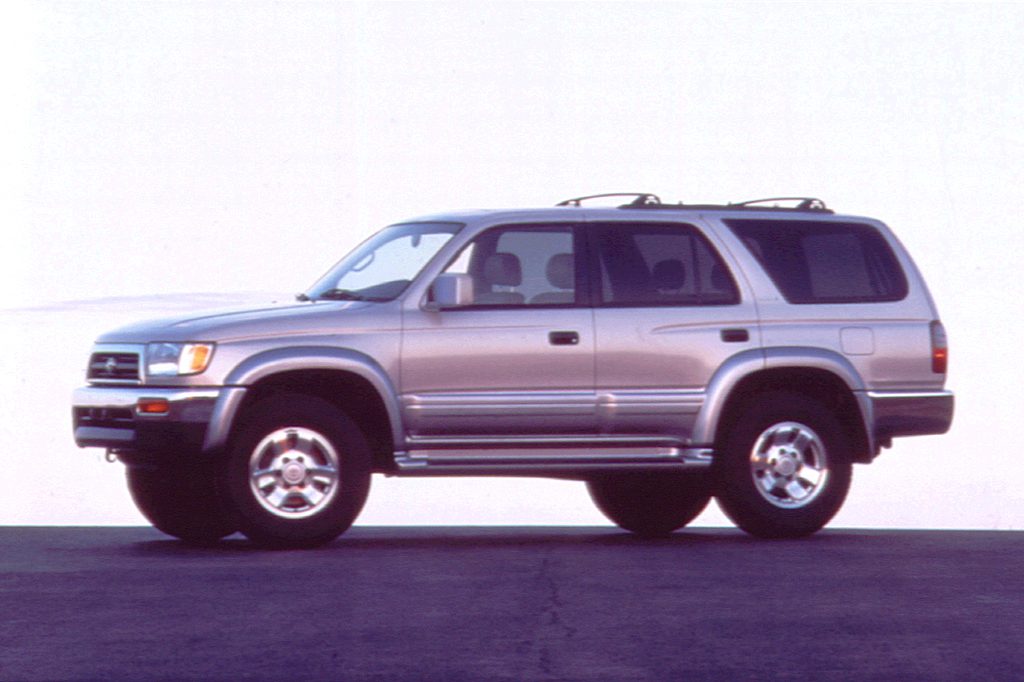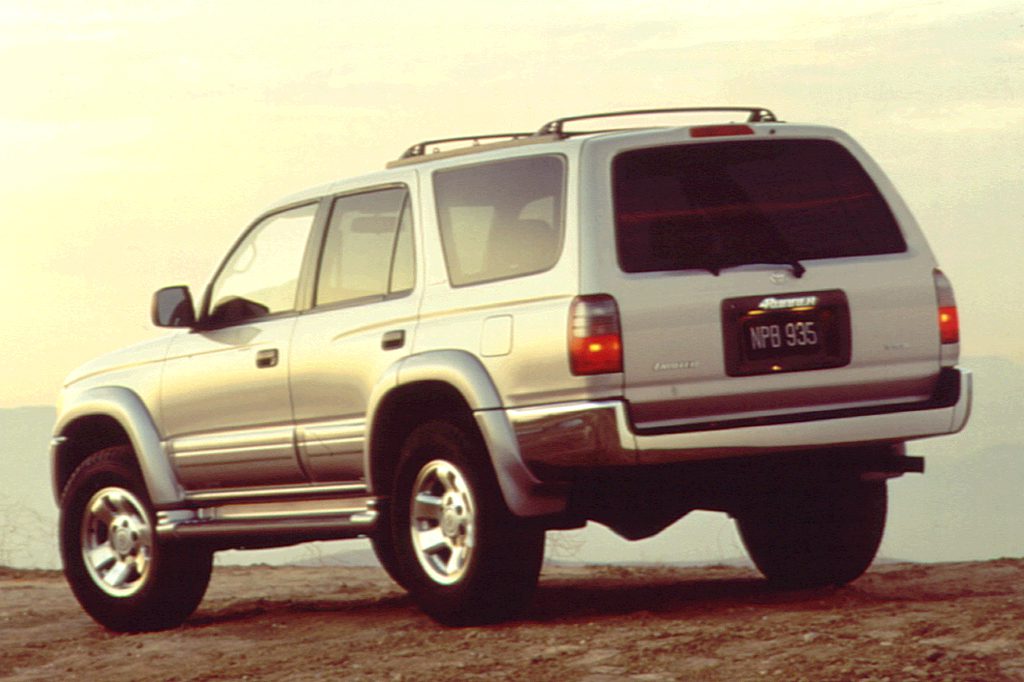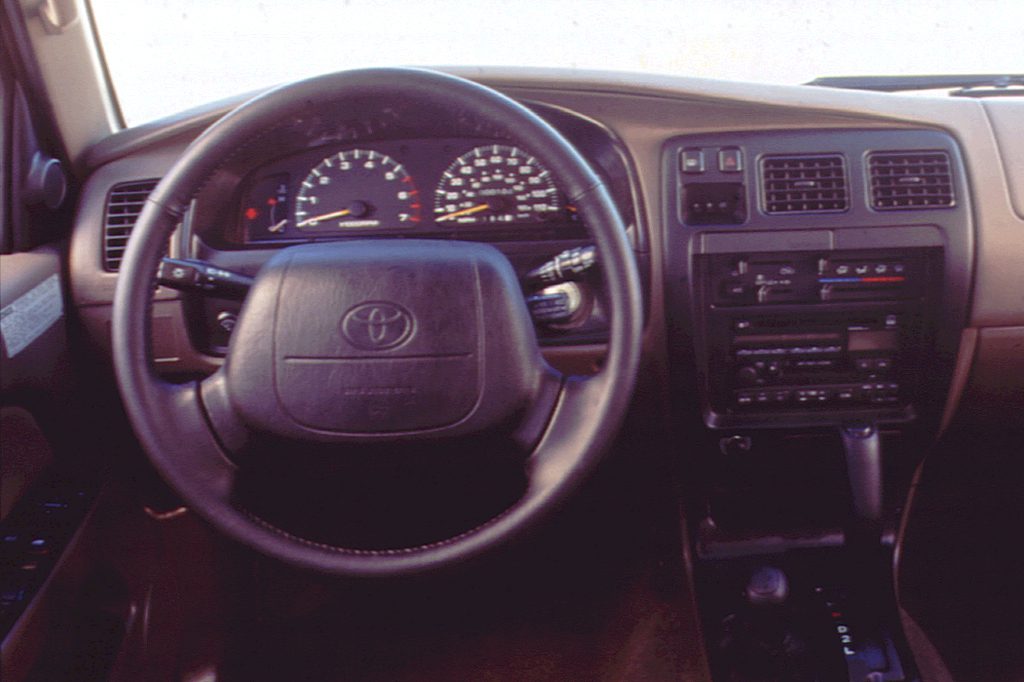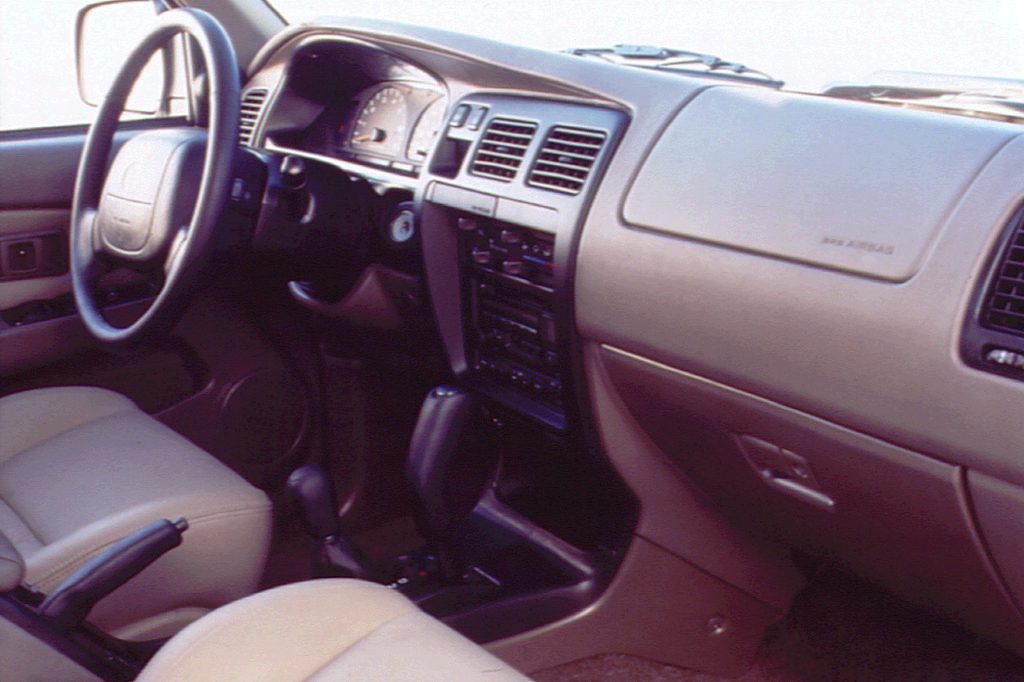| Midsize SUV; Built in Japan |
|
|
| Good condition price range: $2,200 – $8,600* |

1996 Toyota 4Runner SR5 V6

1996 Toyota 4Runner SR5 Limited

1996 Toyota 4Runner interior

1996 Toyota 4Runner interior

1996 Toyota 4Runner interior
| Pros: |
|
| Cons: |
|
Domestic rivals such as the Ford Explorer, Chevrolet Blazer, and Jeep Grand Cherokee might be better bargains, but a 4Runner includes Toyota’s reputation for reliability.
Overview
On sale in March 1996, 4Runner shared powertrains and some chassis elements with the Tacoma pickup, but styling, wheelbase, rear suspension, and interior design differed. Dual airbags were standard, along with 4-wheel antilock brakes and side-impact door beams. Wheelbase was two inches longer, door width grew by 1.5 inches, rear leg room was up three inches, and the floor was lowered by 2.4 inches. A new one-piece rear liftgate replaced the former 2-piece tailgate, with a standard power window. The 4-door wagon came with 2- or 4-wheel drive in base, sportier SR5, and luxury 4WD Limited trim. Base engine was a 2.7-liter 4-cylinder. Standard in the Limited and optional in others was a 183-horsepower, 3.4-liter V6. A 5-speed manual gearbox was standard, 4-speed automatic optional (standard on Limited). All 4x4s except the Limited used a part-time 4WDemand system. Only Limiteds got Toyota’s electronic One-Touch Hi-4 system, with a handy button on the transfer-case lever to shift between 2WD and 4WD High range.
Yearly Updates
| 1997 4Runner A 2-wheel-drive version of the posh Limited became available for ’97. A more sophisticated sequential fuel-injection system went into the 4-cylinder engine, as did a new ignition system. |
| 1998 4Runner The only change for ’98 involved a dealer-installed supercharger for the V6 engine. It increased horsepower by nearly 70 and torque by 50. It also carried the same warranty as regular V6 engines. |
| 1999 4Runner Toyota added full-time 4WD on the Limited. Other models made do with part-time 4WD systems. Across-the-board changes included a mild facelift, standard auto-off headlamps, and a new center console. SR5 models gained an optional Sport Package that added fender flares, fog lamps, hood scoop, and color-keyed bumpers. Limiteds also received a tailgate-window down feature on the keyless remote, plus auto climate control. |
| 2000 4Runner Changes were minor for 2000. Daytime running lights were fitted to 4Runners with ABS. A new CD/cassette stereo was optional for base models, standard for SR5 and Limited. Body-color fender flares became available for SR5s, and were included in an optional “Highlander” Sport option package. |
| 2001 4Runner 4Runner lost its base 4-cylinder models and manual transmission for 2001, but all models now had full-time 4-wheel-drive and an antiskid/traction-control system. All models also got a revised grille and taillamps, and the Limited added standard heated front seats, Homelink remote door opener, and an optional in-dash CD changer. |
| 2002 4Runner For ’02, 4Runner got a new Chrome Package with bright exterior trim. Also new were standard instead of optional air conditioning, remote keyless entry, and alloy wheels for SR5s. 4Runner was redesigned for ’03. |
